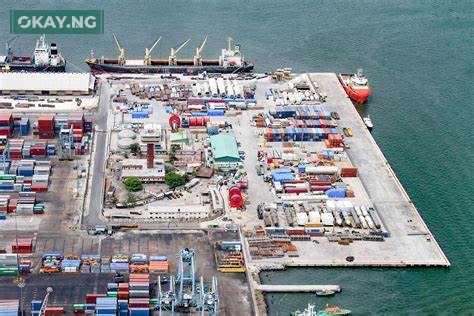To dismantle the longstanding bottlenecks plaguing Nigeria’s crucial port system, the federal government has inaugurated the Ports and Customs Efficiency Committee (PCEC). This high-powered body, spearheaded by the Presidential Enabling Business Environment Council (PEBEC) in collaboration with the Nigerian Ports Authority (NPA), aims to eradicate the systemic dysfunctions that are bleeding the nation’s economy to the tune of trillions of naira each year.
Princess Audu, the Director-General of PEBEC, minced no words about the urgency and significance of this initiative. “This is not just another committee,” she declared with conviction. “It’s a call to action to stop missing opportunities and start implementing the solutions we all agree are overdue.” Her statement underscores a palpable sense of frustration with the persistent challenges that have hampered trade and economic growth for far too long.
The core mandate of the PCEC is to aggressively reduce critical inefficiencies within Nigerian ports. This includes slashing the often-exorbitant cargo dwell time and vessel turnaround time, as well as dismantling the redundant manual processes that have become synonymous with port operations in Nigeria. The economic implications of these inefficiencies are staggering. According to the Lagos Chamber of Commerce and Industry (LCCI), the nation incurs an estimated loss of N6.7 trillion annually due to gridlock and operational shortcomings at its ports.
Audu poignantly highlighted the human cost behind these figures. “These are not just numbers, these are missed opportunities,” she emphasized. “They represent jobs not created, goods not delivered, investments not realised, and economic growth that is unnecessarily delayed.” Her words paint a vivid picture of the tangible impact of port inefficiency on the lives and livelihoods of Nigerians.
Echoing this commitment to change, Abubakar Dantsoho, the Director of the NPA, outlined the authority’s strategic focus on four pivotal pillars: infrastructure, equipment, technology, and human capital. He painted a stark picture of the current state of key port infrastructure. “Tin Can was built 48 years ago, Apapa nearly a century. No major rehabilitation has taken place. That’s unacceptable,” Dantsoho stated firmly. He offered a glimmer of hope, however, announcing the recent government approval for the reconstruction of both the Tin Can and Apapa ports, a development poised to significantly increase berth depth and overall cargo capacity.
Read Also: Nigeria’s Underutilised Seaports Bleed Economic Potential Due to Limited Operating Hours
The sheer volume of traffic overwhelming the Lagos ports further exacerbates the challenges. Dantsoho revealed the staggering statistic that approximately 5,000 trucks daily vie for access to Apapa and Tin Can ports, facilities originally designed to accommodate a mere 1,500 trucks. This stark disparity underscores the urgent need for infrastructural upgrades and more efficient traffic management systems.
Leveraging technology is another key component of the NPA’s strategy. Dantsoho announced a collaboration with the International Maritime Organization (IMO) to deploy a Port Community System (PCS), which will serve as the digital backbone for the National Single Window. “PCS will reduce paperwork, limit human interference, improve transparency, and cut costs,” he explained, highlighting the transformative potential of digitalization in streamlining port operations.
Despite the ambitious plans and the high-level commitment, both Audu and Dantsoho acknowledged that the true measure of success will lie in effective implementation. “NPA cannot do it alone,” Dantsoho stressed. “Efficiency must cut across every segment if we’re serious about competing globally.” This call for collaborative effort across all stakeholders underscores the complex and multifaceted nature of the challenges at hand.
The launch of the PCEC represents a significant step towards unlocking the immense potential of Nigeria’s ports. For businesses and everyday citizens alike, the promise of a more efficient and less costly port system offers a beacon of hope for enhanced trade, economic growth, and ultimately, a more prosperous future. The nation now watches with anticipation to see if this “call to action” will finally translate into tangible and lasting improvements on the ground.













